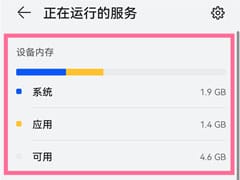前端参数传入后端,多种接收方式一文搞定
2023-01-11 08:41:50
前端参数接收:在后端顺利捕捉和处理数据
在前端开发中,将数据从前端传递到后端进行处理是不可避免的任务。本文将深入探讨如何接收前端传递的参数,并提供不同参数类型的具体示例代码。
简单参数
传递一个简单的值,如字符串或数字,是参数传递最基本的形式。前端通过request方法发送参数,后端使用getQueryParameters()方法获取。
代码示例:
// 前端
const data = 'Hello, World!';
const request = new Request('http://localhost:8080/hello', {
method: 'GET',
params: {
data: data,
},
});
// 后端
@RequestMapping("/hello")
public String hello(@RequestParam String data) {
return "Hello, " + data + "!";
}
实体参数
实体参数是指复杂的数据类型,如对象或数组。前端使用JSON.stringify()方法转换实体参数,后端使用getReader()和JSON.parse()方法获取和解析。
代码示例:
// 前端
const data = {
name: 'John Doe',
age: 30,
};
const request = new Request('http://localhost:8080/user', {
method: 'POST',
headers: {
'Content-Type': 'application/json',
},
body: JSON.stringify(data),
});
// 后端
@RequestMapping("/user")
public User user(@RequestBody User user) {
return user;
}
数组集合参数
数组集合参数是指数组或集合。前端直接通过request方法发送,后端使用getQueryParameters()和Arrays.asList()方法获取和转换。
代码示例:
// 前端
const data = ['Hello', 'World', '!'];
const request = new Request('http://localhost:8080/hello', {
method: 'GET',
params: {
data: data,
},
});
// 后端
@RequestMapping("/hello")
public String hello(@RequestParam String[] data) {
return "Hello, " + String.join(", ", data) + "!";
}
日期参数
日期参数是指日期或时间。前端使用new Date()和toISOString()方法创建和转换,后端使用getQueryParameters()和Date.parse()方法获取和转换。
代码示例:
// 前端
const data = new Date();
const request = new Request('http://localhost:8080/date', {
method: 'GET',
params: {
data: data.toISOString(),
},
});
// 后端
@RequestMapping("/date")
public String date(@RequestParam Long data) {
return "Date: " + new Date(data).toLocaleString();
}
JSON参数
JSON参数是指JSON对象。前端使用JSON.stringify()方法转换,后端使用getReader()和JSON.parse()方法获取和解析。
代码示例:
// 前端
const data = {
name: 'John Doe',
age: 30,
};
const request = new Request('http://localhost:8080/user', {
method: 'POST',
headers: {
'Content-Type': 'application/json',
},
body: JSON.stringify(data),
});
// 后端
@RequestMapping("/user")
public User user(@RequestBody User user) {
return user;
}
路径参数
路径参数是指包含在请求路径中的数据。前端使用window.location.pathname获取,后端使用getPathInfo()和正则表达式提取。
代码示例:
// 前端
const path = window.location.pathname;
// 后端
@RequestMapping("/user/{id}")
public User user(@PathVariable Long id) {
return userService.findById(id);
}
常见问题解答
-
如何防止前端参数篡改?
使用数据验证和签名机制来确保数据完整性。
-
不同参数传递方法的性能如何?
简单的参数和路径参数通常最有效,而实体参数和 JSON 参数会占用更多带宽。
-
什么时候应该使用数组集合参数?
当需要一次性传递多个同类型值时。
-
如何处理日期和时间参数的时区差异?
标准化时区或使用 UTC 时间戳。
-
路径参数是否比查询参数更安全?
路径参数更难以篡改,但查询参数更适合动态 URL。
结论
理解和正确处理前端传递的参数对于有效的后端开发至关重要。本文提供的广泛指南和代码示例使开发者能够自信地接收和处理各种数据类型。通过遵循最佳实践并了解常见的陷阱,您可以确保数据传递的可靠性和安全性。




